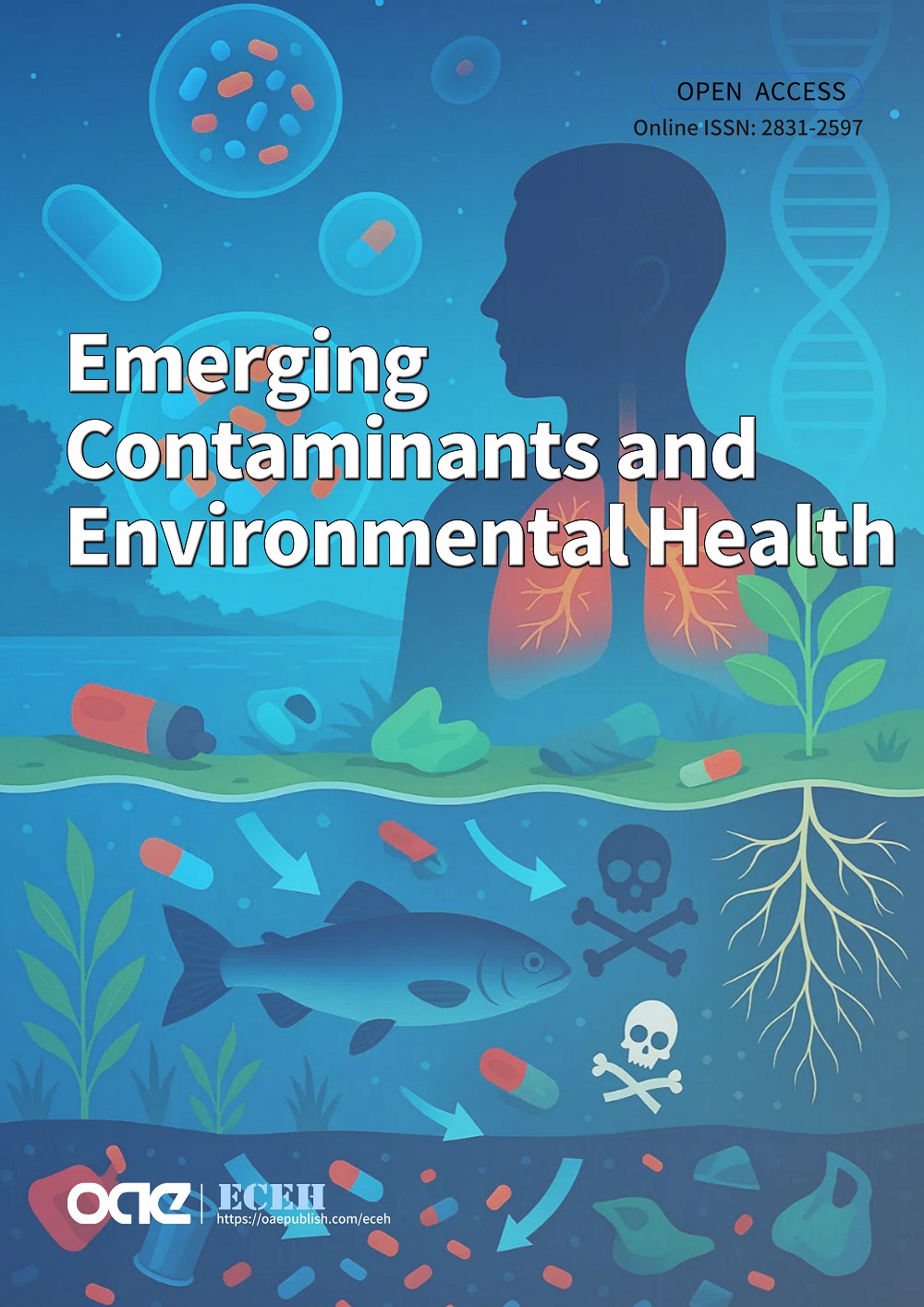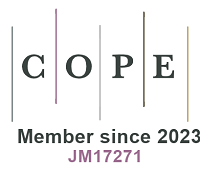REFERENCES
1. Singh, S. V.; Singh, K.; Kumar, N. Sustainable food waste utilization in the context of the Indian hospitality industry. In Promoting sustainable gastronomy tourism and community development. IGI Global; 2024. pp. 229-41.
2. Swati, A.; Hait, S. Greenhouse gas emission during composting and vermicomposting of organic wastes - a review. CLEAN. Soil. Air. Water. 2018, 46, 1700042.
3. UN Environment Programme. Solid waste management. https://www.unep.org/explore-topics/resource-efficiency/what-we-do/cities/solid-waste-management. (accessed 2025-10-29).
4. Khanal, S.; Karimi, K.; Majumdar, S.; et al. Sustainable utilization and valorization of potato waste: state of the art, challenges, and perspectives. Biomass. Conv. Bioref. 2024, 14, 23335-60.
5. Vescovo, D.; Manetti, C.; Ruggieri, R.; et al. The valorization of potato peels as a functional ingredient in the food industry: a comprehensive review. Foods 2025, 14, 1333.
6. Amenyeku, G.; Cobbina, S. J.; Asare, W.; Teye, G. K. Hydrothermal carbonization of organic waste using faecal sludge as a water source: response surface methodology-Box Behnken design. Environ. Challenges. 2024, 15, 100900.
7. Mahata, S.; Periyavaram, S. R.; Akkupalli, N. K.; Srivastava, S.; Matli, C. A review on co-hydrothermal carbonization of sludge: effect of process parameters, reaction pathway, and pollutant transport. J. Energy. Inst. 2023, 110, 101340.
8. Basso, D.; Patuzzi, F.; Castello, D.; et al. Agro-industrial waste to solid biofuel through hydrothermal carbonization. Waste. Manag. 2016, 47, 114-21.
9. Li, L.; Diederick, R.; Flora, J. R.; Berge, N. D. Hydrothermal carbonization of food waste and associated packaging materials for energy source generation. Waste. Manag. 2013, 33, 2478-92.
10. Niinipuu, M.; Latham, K. G.; Boily, J. F.; Bergknut, M.; Jansson, S. The impact of hydrothermal carbonization on the surface functionalities of wet waste materials for water treatment applications. Environ. Sci. Pollut. Res. Int. 2020, 27, 24369-79.
11. Fang, J.; Gao, B.; Chen, J.; Zimmerman, A. R. Hydrochars derived from plant biomass under various conditions: characterization and potential applications and impacts. Chem. Eng. J. 2015, 267, 253-9.
12. Czerwińska, K.; Śliz, M.; Wilk, M. Hydrothermal carbonization process: fundamentals, main parameter characteristics and possible applications including an effective method of SARS-CoV-2 mitigation in sewage sludge. A review. Renew. Sustain. Energy. Rev. 2022, 154, 111873.
13. Kozyatnyk, I.; Benavente, V.; Weidemann, E.; Gentili, F. G.; Jansson, S. Influence of hydrothermal carbonization conditions on the porosity, functionality, and sorption properties of microalgae hydrochars. Sci. Rep. 2023, 13, 8562.
14. Goyi, A. A.; Sher Mohammad, N. M.; Omer, K. M. Nitrogen-rich, potato peel-derived hydrochar as an effective dye adsorbent. Biofuels 2024, 15, 1131-44.
15. Xiao, K.; Liu, H.; Li, Y.; et al. Correlations between hydrochar properties and chemical constitution of orange peel waste during hydrothermal carbonization. Bioresour. Technol. 2018, 265, 432-6.
16. Monlau, F.; Sambusiti, C.; Antoniou, N.; Zabaniotou, A.; Solhy, A.; Barakat, A. Pyrochars from bioenergy residue as novel bio-adsorbents for lignocellulosic hydrolysate detoxification. Bioresour. Technol. 2015, 187, 379-86.
17. Sun, T.; Wang, F.; Xie, Y.; et al. Biochar remediation of PFOA contaminated soil decreased the microbial network complexity. J. Environ. Chem. Eng. 2023, 11, 109239.
18. Xu, M.; Cui, Z.; Zhao, L.; Hu, S.; Zong, W.; Liu, R. Characterizing the binding interactions of PFOA and PFOS with catalase at the molecular level. Chemosphere 2018, 203, 360-7.
19. Zhang, D. Q.; Zhang, W. L.; Liang, Y. N. Adsorption of perfluoroalkyl and polyfluoroalkyl substances (PFASs) from aqueous solution - a review. Sci. Total. Environ. 2019, 694, 133606.
20. Guo, R.; Liu, X.; Liu, J.; et al. Occurrence, partition and environmental risk assessment of per- and polyfluoroalkyl substances in water and sediment from the Baiyangdian Lake, China. Sci. Rep. 2020, 10, 4691.
21. Miserli, K.; Boti, V.; Konstantinou, I. Analysis of perfluorinated compounds in sewage sludge and hydrochar by UHPLC LTQ/Orbitrap MS and removal assessment during hydrothermal carbonization treatment. Sci. Total. Environ. 2024, 929, 172650.
22. Araújo, R. G.; Rodríguez-Hernandéz, J. A.; González-González, R. B.; et al. Detection and tertiary treatment technologies of poly-and perfluoroalkyl substances in wastewater treatment plants. Front. Environ. Sci. 2022, 10, 864894.
23. Miserli, K.; Athanasiou, V.; Boti, V.; Hela, D.; Konstantinou, I. Determination of PFAS in wastewaters and natural waters by solid phase extraction and UHPLC LTQ/Orbitrap MS for assessing occurrence and removals. Case. Stud. Chem. Environm. Eng. 2023, 8, 100505.
24. Afrooz, M.; Zeynali, R.; Soltan, J.; Mcphedran, K. N. A novel biochar adsorbent for treatment of perfluorooctanoic acid (PFOA) contaminated water: exploring batch and dynamic adsorption behavior. J. Water. Process. Eng. 2025, 69, 106586.
25. United States Environmental Protection Agency. Per- and polyfluoroalkyl substances (PFAS). Final PFAS National Primary Drinking Water Regulation. 2025. https://www.epa.gov/sdwa/and-polyfluoroalkyl-substances-pfas. (accessed 2025-10-29).
26. Liu, F.; Pignatello, J. J.; Sun, R.; Guan, X.; Xiao, F. A comprehensive review of novel adsorbents for per- and polyfluoroalkyl substances in water. ACS. EST. Water. 2024, 4, 1191-205.
27. Chen, F.; Chen, J.; Liu, X.; et al. Removal of per- and polyfluoroalkyl substances by activated hydrochar derived from food waste: sorption performance and desorption hysteresis. Environ. Pollut. 2023, , 122820.
28. Buarque, F. S.; Monteiro E Silva, S. A.; Ribeiro, B. D. Choline chloride-based deep eutectic solvent as an inhibitor of metalloproteases (collagenase and elastase) in cosmetic formulation. 3. Biotech. 2023, 13, 219.
29. Huang, J.; Cao, S.; Liu, Z.; Tian, J.; Xi, C.; Chen, Z. High-efficiency removal of methcathinone from water using a novel DES modified magnetic biochar nanocomposite. J. Environ. Chem. Eng. 2022, 10, 108456.
30. Xu, J.; Liu, Z.; Zhao, D.; Gao, N.; Fu, X. Enhanced adsorption of perfluorooctanoic acid (PFOA) from water by granular activated carbon supported magnetite nanoparticles. Sci. Total. Environ. 2020, 723, 137757.
31. Hassan, M.; Du, J.; Liu, Y.; et al. Magnetic biochar for removal of perfluorooctane sulphonate (PFOS): interfacial interaction and adsorption mechanism. Environ. Technol. Innov. 2022, 28, 102593.
32. García-Suárez, E. J.; Menéndez-Vázquez, C.; García, A. B. Chemical stability of choline-based ionic liquids supported on carbon materials. J. Mol. Liq. 2012, 169, 37-42.
33. Kalam, S.; Abu-Khamsin, S. A.; Kamal, M. S.; Patil, S. Surfactant adsorption isotherms: a review. ACS. Omega. 2021, 6, 32342-8.
34. Boparai, H. K.; Joseph, M.; O’Carroll, D. M. Kinetics and thermodynamics of cadmium ion removal by adsorption onto nano zerovalent iron particles. J. Hazard. Mater. 2011, 186, 458-65.
35. Niaz, W.; Zhang, D.; Ahmad, Z.; et al. Efficient removal of perfluorooctanoic acid (PFOA) and perfluorooctane sulfonic acid (PFOS) from aqueous solution using modified biochar: preparation, performance, and mechanistic insights. J. Environ. Chem. Eng. 2024, 12, 114894.
36. Angı, A.; Sanlı, D.; Erkey, C.; Birer, Ö. Catalytic activity of copper (II) oxide prepared via ultrasound assisted Fenton-like reaction. Ultrason. Sonochem. 2014, 21, 854-9.
37. Robertson, M.; Lamb, B.; Griffin, A.; He, L.; Ma, B.; Qiang, Z. Critical role of pore size on perfluorooctanoic acid adsorption behaviors in carbonaceous sorbents. Mater. Horiz. 2025, 12, 2935-44.
38. Barmina, I.; Lickrastina, A.; Zake, M.; Arshanitsa, A.; Solodovnik, V.; Telysheva, G. Experimental study of thermal decomposition and combustion of lignocellulosic biomass pellets. Latv. J. Phys. Tech. Sci. 2013, 50, 35-48.
39. Li, P.; Wang, Y.; Hou, Q.; et al. Preparation of cellulose nanofibrils from okara by high pressure homogenization method using deep eutectic solvents. Cellulose 2020, 27, 2511-20.
40. Khan, Z.; Yusup, S.; Ahmad, M. M. Thermogravimetric analysis of palm oil wastes decomposition. In 2011 IEEE Conference on Clean Energy and Technology (CET), Kuala Lumpur, Malaysia. June 27-29, 2011. IEEE; 2011. pp. 205-8.
41. Adebisi, G. A.; Chowdhury, Z. Z.; Abd Hamid, S. B.; Ali, E. Hydrothermally treated banana empty fruit bunch fiber activated carbon for Pb(II) and Zn(II) removal. BioResources 2016, 11, 9686-709.
42. Goyi, A. A.; Sher Mohammad, N. M.; Omer, K. M. Preparation and characterization of potato peel derived hydrochar and its application for removal of Congo red: a comparative study with potato peel powder. Int. J. Environ. Sci. Technol. 2024, 21, 631-42.
43. Sevilla, M.; Fuertes, A. The production of carbon materials by hydrothermal carbonization of cellulose. Carbon 2009, 47, 2281-9.
44. Mukti, N. I. F.; Ariyanto, T.; Sediawan, W. B.; Prasetyo, I. Efficacy of modified carbon molecular sieve with iron oxides or choline chloride-based deep eutectic solvent for the separation of CO2/CH4. RSC. Adv. 2023, 13, 23158-68.
45. Gao, P.; Zhou, Y.; Meng, F.; et al. Preparation and characterization of hydrochar from waste eucalyptus bark by hydrothermal carbonization. Energy 2016, 97, 238-45.
46. Liang, M.; Zhang, K.; Lei, P.; Wang, B.; Shu, C.; Li, B. Fuel properties and combustion kinetics of hydrochar derived from co-hydrothermal carbonization of tobacco residues and graphene oxide. Biomass. Conv. Bioref. 2020, 10, 189-201.
47. Prasannamedha, G.; Kumar, P. S.; Kyzas, G. Hydrothermal carbonization of waste sugarcane bagasse for the effective removal of emerging contaminants from aqueous solution. Adsorpt. Sci. Technol. 2022, 2022, 8684737.
48. Liu, P.; Hao, J.; Liang, S.; Liang, G.; Wang, J.; Zhang, Z. Choline chloride and itaconic acid-based deep eutectic solvent as an efficient and reusable medium for the preparation of 13-aryl-5H-dibenzo[b,i]xanthene-5,7,12,14(13H)-tetraones. Monatsh. Chem. 2016, 147, 801-8.
49. Potchamyou Ngatcha, A. D.; Zhao, A.; Zhang, S.; et al. Determination of active sites on the synthesis of novel Lewis acidic deep eutectic solvent catalysts and kinetic studies in microalgal biodiesel production. RSC. Adv. 2023, 13, 10110-22.
50. Pervez, M. N.; Jiang, T.; Mahato, J. K.; et al. Surface modification of graphene oxide for fast removal of per- and polyfluoroalkyl substances (PFAS) mixtures from river water. ACS. ES. T. Water. 2024, 4, 2968-80.
51. Lei, X.; Yao, L.; Lian, Q.; et al. Enhanced adsorption of perfluorooctanoate (PFOA) onto low oxygen content ordered mesoporous carbon (OMC): adsorption behaviors and mechanisms. J. Hazard. Mater. 2022, 421, 126810.
52. Yu, Q.; Zhang, R.; Deng, S.; Huang, J.; Yu, G. Sorption of perfluorooctane sulfonate and perfluorooctanoate on activated carbons and resin: kinetic and isotherm study. Water. Res. 2009, 43, 1150-8.
53. Yan, Z.; Sun, Y.; Yan, J.; Liu, R.; Zhang, J.; Song, J. Rapid adsorption of per- and polyfluoroalkyl substances (PFAS) on N-doped porous carbons (NPCs) derived from ZIF-8 over a wide pH range: adsorption behaviors and mechanisms. Sep. Purif. Technol. 2025, 365, 132575.
54. Kasalica, K.; Petronijevic, N.; Radulovic, J.; et al. Adsorption analysis of PFOA on activated carbon and ion-exchange resin: a comparative study using four isotherm models. J. Serb. Chem. Soc. 2024, 89, 1619-28.
55. Tian, D.; Geng, D.; Tyler Mehler, W.; et al. Removal of perfluorooctanoic acid (PFOA) from aqueous solution by amino-functionalized graphene oxide (AGO) aerogels: influencing factors, kinetics, isotherms, and thermodynamic studies. Sci. Total. Environ. 2021, 783, 147041.
56. Sahu, S.; Yadav, M. K.; Gupta, A. K.; et al. Modeling defluoridation of real-life groundwater by a green adsorbent aluminum/olivine composite: isotherm, kinetics, thermodynamics and novel framework based on artificial neural network and support vector machine. J. Environ. Manage. 2022, 302, 113965.
57. Ghaedi, M.; Shokrollahi, A.; Hossainian, H.; Kokhdan, S. N. Comparison of activated carbon and multiwalled carbon nanotubes for efficient removal of eriochrome cyanine R (ECR): kinetic, isotherm, and thermodynamic study of the removal process. J. Chem. Eng. Data. 2011, 56, 3227-35.
58. Wang, F.; Liu, C.; Shih, K. Adsorption behavior of perfluorooctanesulfonate (PFOS) and perfluorooctanoate (PFOA) on boehmite. Chemosphere 2012, 89, 1009-14.
59. Hakimabadi, S. G.; Taylor, A.; Pham, A. L. Factors affecting the adsorption of per- and polyfluoroalkyl substances (PFAS) by colloidal activated carbon. Water. Res. 2023, 242, 120212.
60. Yang, H.; Joe, H. J.; Park, S.; Kim, S. K.; Lee, C. Enhanced removal of perfluorooctanoic acid (PFOA) from water using ZnO-Ag-ZnAl2O4 composites: performance and mechanistic insights. J. Water. Process. Eng. 2024, 61, 105288.
61. Lei, X.; Lian, Q.; Zhang, X.; et al. Removal of perfluorooctanoic acid via polyethyleneimine modified graphene oxide: effects of water matrices and understanding mechanisms. Chemosphere 2022, 308, 136379.
62. Imran, A.; Lei, X.; Shoemaker, D. J.; et al. Adsorption of PFCAs using polyethyleneimine modified Biochar: role of chain length and effects of water matrices. Chemosphere 2025, 386, 144650.
63. Niinipuu, M.; Bergknut, M.; Boily, J. F.; Rosenbaum, E.; Jansson, S. Influence of water matrix and hydrochar properties on removal of organic and inorganic contaminants. Environ. Sci. Pollut. Res. Int. 2020, 27, 30333-41.
64. Fagbayigbo, B. O.; Opeolu, B. O.; Fatoki, O. S.; Akenga, T. A.; Olatunji, O. S. Removal of PFOA and PFOS from aqueous solutions using activated carbon produced from Vitis vinifera leaf litter. Environ. Sci. Pollut. Res. Int. 2017, 24, 13107-20.
65. Wu, Y.; Qi, L.; Chen, G. A mechanical investigation of perfluorooctane acid adsorption by engineered biochar. J. Clean. Prod. 2022, 340, 130742.
66. Saba, A.; Mcgaughy, K.; Reza, M. Techno-economic assessment of co-hydrothermal carbonization of a coal-miscanthus blend. Energies 2019, 12, 630.
67. Du, Z.; Deng, S.; Bei, Y.; et al. Adsorption behavior and mechanism of perfluorinated compounds on various adsorbents - a review. J. Hazard. Mater. 2014, 274, 443-54.







